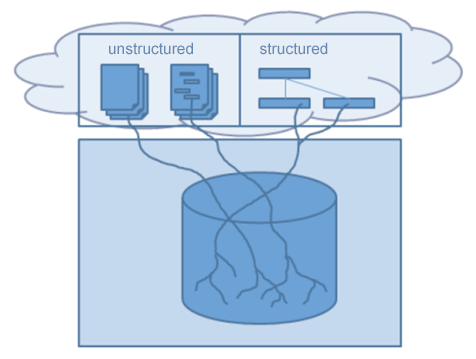Analytics / Smart data
By the year 2020, six terabytes of data will be on file for each of us – that’s the text equivalent of three million books for every person on earth! And yet, only three percent of the data is indexed and can therefore be found in the World Wide Web. Even less of the data is being analyzed.
Turning data into information
Big data delivers the technologies to record, store, and analyze these huge and more importantly unstructured masses of data and to present the results in usable ways. But since data in itself is not useful for anything, it has to be turned into information. Big Data has to become smart data before concrete action recommendations can be derived from the data pool.
Only understanding the data creates added value
In order to properly analyze large amounts of data, you have to understand it – meaning you need to know where the data comes from and what the context is, for instance how the devices and systems work and which sensory and measuring technologies are used to extract useful data. The crucial factor here is not necessarily the “mass” (big), but the “valuable content” (smart). In the future, smart data will answer not only the question “What is happening in my system right now?” but also "Why is it happening?” or even “What is going to happen next and what should we do?"
Our approach is a path of small steps
When it comes to smart data, ISB favors an approach by which a functioning solution is implemented with manageable effort – initially limited to one business domain. This matches a general trend in software development, moving away from rigid waterfall models and toward agile approaches. This way, the overall success of a project can be verified at an early stage by means of partial successes. Based on assessable partial results, important detail decisions can be improved and lead to a better overall result.
We start the project with the following questions:
- What concrete information does the domain need?
- What is the right size for the first pitch?
- What is the company's maturity level regading big data/ smart data?
- What is a suitable starting point for the project?
The advantages of this approach are clear: specific questions within a domain are more sharply defined. There is common understanding of the problems.

Your contact
Marcus Rentschler
Senior Account Manager
Phone: +49 721 82800-180
Mobile: +49 175 2657390
E-Mail: marcus.rentschlerconet-isb.de
For many years, CONET ISB’s activities have focused on the automotive aftermarket sector. Our customers’ expertise perfectly complements our deep understanding of the challenges in this market segment. In addition, we have worked with the Research Center for Information Technology (FZI) for many years. The cooperation ensures that we always use the latest research findings in our projects.
The following is an example scenario in the aftermarket sector which illustrates how smart data can break new ground to provide entirely new insights.
A key concept in the scenario is that of domain-specific ontologies, formally structured representations of specialist terms with their references and rules. These express the semantic connections within the domain. In our approach, we use domain-specific ontologies to represent knowledge that is dynamically attributed to the objects of the ontology from various sources.
Specialist systems usually work with a structured model that satisfies a domain-specific ontology. Recording and maintaining data in these systems takes a great deal of effort and discipline. Big data, on the other hand, is generated in more heterogeneous, sometimes unstructured ways. Examples of such information are the many publications on the internet on various topics, which are often only available in unstructured texts.
In our scenario, we want to help our customer to bridge the gap between the structured and the unstructured world using the methods of smart data. The essential added value of our smart data approach lies in the fact that incoming data does not have to be forced into a rigid data model before usable information can be extracted. Rather, its informational content is dynamically and continuously integrated into the existing knowledge base, as the diagram illustrates.
Internet forums, blogs, or editorial publications provide a wealth of information that can prompt action if recognized early. The semantic linkage of various data sources with our smart data approach opens up new insights that would not be recognized without such an approach.
In forums, for instance, quality issues of our customers’ products are discussed, trends in the aftermarket business are illuminated, or new market developments are described and discussed. We automatically search for this information and augment the structured data of the customer portals and applications with this current information from the internet.
The goal is to use smart data technologies to identify statements and opinions published on the web nearly in real time, to add them to the customer’s master data, and thus offer more information and provide a solid basis for decisions. Other information sources such as sensor networks or data from existing white paper can also be integrated. In keeping with our approach, however, this should occur in stages and based on the experience of initial simple stages.
This use of current, unstructured internet data gives our customers a temporal lead and the possibility to be pro-active early instead of just reacting. The customer’s scope of action can be better exploited. More efficient and more economical solutions become possible, providing a competitive advantage.


